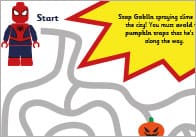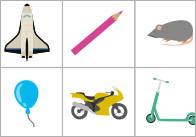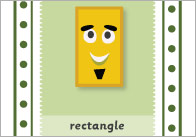‘Life in every limb’: Early Education Conference
Children want space at all ages. But from the age of one to seven, space, that is ample space, is almost as much wanted as food and air. To move, to run, to find things out by new movement, to “feel one’s life in every limb”, that is the life of early childhood.’ Margaret McMillan The Nursery School 1919/1939
On Saturday, I returned from the Early Education www.early-education.org.uk conference at Laban in Greenwich. It was so inspiring that I have to capture it while it is still fresh. The title was ‘Life in Every Limb’ and the main thrust was to celebrate physicality- physical development as a fundamental part to children’s development and wellbeing. Although we had to do the complete antithesis of what the day was about by sitting still through 4 presentations, the day was absorbing and time went quickly.
The message came across loud and clear. I learned new things about how children’s neurological systems work which has made me realise how important it is that we pay close attention to ensuring that children have the opportunities to practice the movements they are wired up to experience. Like most early years practitioners, I always knew that it was important to provide children with opportunities to move, in order to strengthen their gross motor muscles; I also knew that there was a connection between strong arm movements and the ability to develop fine motor hand coordination and that all children and boys in particular learn best by doing and moving as much as possible and that expecting them to sit still for long periods is harmful to them and sets them up to fail.
What I learned yesterday however was that there is a lot more to it than that. I made some notes but if I’ve got a few speakers mixed up and not got it quite right, I hope they will forgive me!
Barbara Kenny the National chair of the association, in her welcome reminded us of how important it is to be part of an organisation so committed to getting it right for children- so many inspiring people have belonged to it.
Helen Moylett’s opening remarks were on the theme of the ‘70’s song – To Everything there is a Season and a Time for Every Purpose…… giving children time to be what they need to be, do what they need to do and valuing them for the people they are now and not what they might become in the future. Linda Pound set everything in a historical context and was able to track the progress of pioneers of the past and present in terms of the importance put upon exploration of the environment , taking risks, valuing imagination and creativity and the freedom of children to move and express themselves through movement.
There was an exhibition of some of the pioneering nurseries of the past and the work they do today and it was encouraging to see the way that these nurseries have held true to their heritage as they have developed up to the present. One of her observations of today’s education system is that although there have been some good initiatives which have made a difference – ECAT ( Every Child a Talker), being one of them, we’ve taken the bodies out of education and focused on the brain only. Today too, apparently a survey on what constitutes lack of happiness or wellbeing in families shows different priorities for different countries,
Sweden -Not having enough space outdoors
Spain- Not having enough family time
UK- Not enough consumer goods.
In terms of tomorrow – will neurological research, where we are learning about the connection between cognitive and physical development have an impact on the way we educate children?Will what we know about the importance of day- time rests make anything change? Will we be able to reach for the stars?
Sally Goddard Blythe’s presentation was a wealth of new information for me. I cannot hope to do justice to it here and urge you to research more on the internet. She is International Director of the Institute for Neuro Physiological Psychology ( INPP) which specialises in the assessment and supervision of physical remedial interventions for children who are under – achieving in primary schools.
She began by reminding us that there is no longer screening for children by a school doctor for children at school entry. Where children could, until 35 years ago be identified if there were problems with balance, motor skills, vision or hearing, these children now go undetected until obvious problems arise.
We know that the development of motor skills is influenced by maturation- the way in which the body is programmed to develop, and the social engagement with the environment- the amount of opportunity a child gets to practice these movements. What was new to me was the way that the ‘primitive’ reflexes present at birth are gradually inhibited during the first 6 months of life and integrated into more mature reflexes. By three and a half years primitive reflexes should have disappeared altogether.
Children who don’t experience some of the necessary movements are often affected in such a way that they need to go back to them and practise them. Balance and posture rely on having a well -functioning reflex system to support coordination at a subconscious level. Speech development can also be affected . Experiences such as rough and tumble play are important for this reason as well as helping children to socialise and to manage their emotions, particularly anger.
Very powerful was showing a video of a 7 year old who had missed out on crawling as a child and had immature reflexes in his hands and feet and was unable for example to stand on the outside edge of his feet. This child had been under achieving, had delayed language development and had emotional and behavioural problems. Taking part in a specific physical development programme, filling in the missing gaps, made a big difference to his wellbeing and educational attainment.
The INPP has developed a screening test for the continued presence of three primitive reflexes together with other developmental tests for balance and coordination, to help practitioners identify children who might be at risk of under- achieving as a result of immature neuromotor skills. They have also devised a school based physical developmental programme ( PMD) which has been successful in raising attainment in children who have both signs of immature neuromotor skills and reading performance and children who are under achieving. An interesting point was that some children who may be performing to their chronological age but could in fact achieve higher but are hampered by immature neuromotor skills, would not be picked up in any educational attainment test. This approach would therefore be beneficial to high-end under-achievers too.
The research findings were fascinating, particularly where children were asked to draw a person before they started the programme and then again at the end. This test was used to measure educational attainment- I think!! (here I stopped writing things down as I was watching the screen!). You really must look at the research findings.
It has definitely highlighted the fact some of the things we notice in children; difficult behaviour, delay in walking, no crawling, late talking and overly shy or boisterous behaviour could mean that there is a need for physical development intervention.
Sally advocates:
– developmental screening of all children at school entry and at key stages throughout education
– The implementation of a daily physical programme for all children and specific programmes for children with identified difficulties.
– Flexibility within the education system for children to have an extended time to develop physical awareness
– Improved awareness of teachers and parents to the importance and stages of physical development and the experiences needed to develop them.
– Improved inter- disciplinary communication and cooperation- medicine and education- throughout the school years. a mouse on the computer as an example of fine motor manual dexterity is not it!
– Valuing as a society, the role of motherhood.
The link below will be of interest:
The remaining speakers of the day built on this information and gave some ideas of how we can go forward and improve our practice to ensure that children’s physical development is optimised.
Megan Pacey (Chief Executive of Early Education)’s introduction to the afternoon session used powerful photographs of children known to her, to highlight the importance of allowing children’s physicality to flourish.
Jan White, consultant for Outdoor provision in Early Years was an inspiring speaker. She hoped that having Physical Development as a Prime Area in the revised EYFS might help to give importance to and raise people’s awareness of the importance of Physical Development. By showing a delightful film of a toddler, exploring his garden with his mum she was able to make so many important points.
She reminded us that:
– There is a neurological link between speech and movement
– There is a big link between the joy of movement and mental health and feeling capable.
– Exercise is important for the development of physical health (bone density)- for all ages
– Movement develops core neurological systems
– Movement is connected to the development of vision
– Physical play – particularly rough and tumble play is a way of promoting Personal , Social and Emotional development
– Children learn best through moving and doing.
– Development of hand control is connected to other movement control.
– Participating in enough movement can encouraging good learning attitudes
In primary school children with behaviour difficulties, immature pencil grip, difficulty sitting still, specific spelling and maths difficulties, difficulties making friends , a bright child under achieving and those avoiding school may have underlying physical development problems.
Jan explained the connection between the Babkin response (when a baby sucks , its hands remain clenched. To stimulate the sucking movements in a baby, sometimes massaging the palm helps) and immature pencil grip, also that when babies crawl they have to open up their fingers and missing out on crawling might have a connection.
A physical development test:
1) 3 ½ – 4 yrs a child should be able to stand on one leg for 8 seconds
2) Touching thumb to each finger on the same hands separately by age 5
3) Successfully crossing the midline excercise by age 4
What parents and practitioners can do:
– Make sure that children have opportunities for free movement and exploration- a child who is learning to walk spends 6 hours a day on its feet practising.
– Babies and older children need tummy time to strengthen neck and back muscles.
– Children and adults need time to explore surfaces without wearing shoes
– Children, from birth need opportunities to develop proprioception-the concept of knowing you are in your own body- pushing and pulling , lifting and carrying help to develop this which begins when a baby starts to learn where its body begins and ends- eg learns that it has fingers and toes.
– In order to learn balance and posture children need vestibular development stimulation- this is the drive to swing, hang upside down twirl and spin. As a child, from the age of 5 I had welsh folk dancing lessons every week as part of our PE lessons- I can see why now! I was hopeless at it and as a child I was very shy and timid.
– Ensure children have plenty of time for social interactions and to spend time in conversation, actively engaged with their parents.
– Spend time playing singing games with children
– Read to your children.
Jan recommended:
The Bare Foot Book
The Art of Rough Housing
Jim Greenman- Caring Spaces, Learning spaces
Michael Lazarat – Accoustic Bridge
Penny Greenland is the Director of Jabadeo Movement Play Specialists www.jabadeo.org, and the last speaker of the day. She was completely engaging, which should have been impossible after such a long thought provoking day.
She talked more about proprioception and the difference between having a body and being a body. The joy of movement was almost tangible just by listening to her describe her work, not only with young children but with adults with dementia. She described the need for there to be movement spaces where children could be free to play, run and experiment with any movements they wished-full bodied spontaneous movement. She emphasised the link between movement and communication and said that children ‘speak long and hard with their bodies’. Adults should not be a barrier to the child’s movement and be willing to let them make a noise because that is part of the joy of movement. When they undertake their Jabadeo movement programmes there are three rules for the practitioners or ‘players’ as she calls them.
1) Get down to the child’s level
2) Keep quiet
3) Wait!
She described how some practitioners observing and being talked through a session where there were 3 children and 2 ‘players’, found it very difficult to understand that the adult needed to take the lead from the child.
Penny too advocated back and tummy time, belly crawling, crawling and rough and tumble play and pushing and pulling as part of a Developmental Movement programme.
As a result of what I learned I have thought about changes we can make to our routine, environment and practice to ensure that our children have life in every limb.
– Find a way for children to hang and swing safely
– Purchase something which allows children to revolve and spin.
– Observe children with delayed speech and language or behaviour issues to see if there is a delay , or missing stage in their physical development
– Look into ways of adding a Development Movement Programme to our wellbeing initiative.
– Create a movement space in the Quiet Room which allows children to use the space for spontaneously movement safely.
I am sure that I haven’t done justice to the speakers and I may have got a bit muddled in interpreting their message. Please feel free to correct me by writing a comment below.
Popular Teaching Resources
Stay Up To Date
Sign up for our newsletter and we’ll let you know when we create new early years resources.





